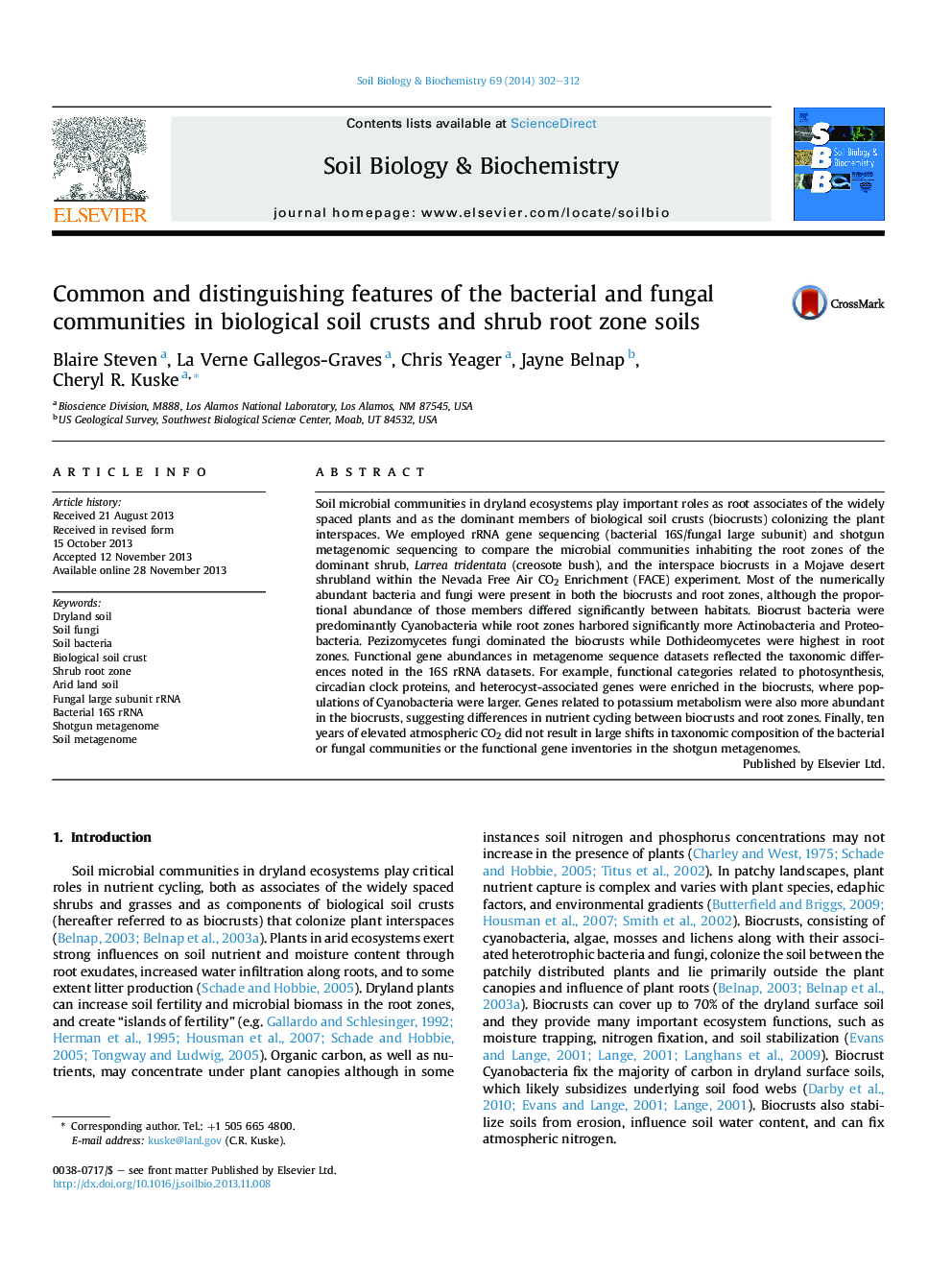| کد مقاله | کد نشریه | سال انتشار | مقاله انگلیسی | نسخه تمام متن |
|---|---|---|---|---|
| 2024740 | 1542615 | 2014 | 11 صفحه PDF | دانلود رایگان |
• Bacterial and fungal communities in soil habitats of an arid shrubland were mapped.
• Composition differed between root zones and soil crusts, but many OTUs were shared.
• Shotgun metagenomes suggested functional differences in the habitat patches.
• Elevated CO2 did not alter the structure or function of the total soil community.
Soil microbial communities in dryland ecosystems play important roles as root associates of the widely spaced plants and as the dominant members of biological soil crusts (biocrusts) colonizing the plant interspaces. We employed rRNA gene sequencing (bacterial 16S/fungal large subunit) and shotgun metagenomic sequencing to compare the microbial communities inhabiting the root zones of the dominant shrub, Larrea tridentata (creosote bush), and the interspace biocrusts in a Mojave desert shrubland within the Nevada Free Air CO2 Enrichment (FACE) experiment. Most of the numerically abundant bacteria and fungi were present in both the biocrusts and root zones, although the proportional abundance of those members differed significantly between habitats. Biocrust bacteria were predominantly Cyanobacteria while root zones harbored significantly more Actinobacteria and Proteobacteria. Pezizomycetes fungi dominated the biocrusts while Dothideomycetes were highest in root zones. Functional gene abundances in metagenome sequence datasets reflected the taxonomic differences noted in the 16S rRNA datasets. For example, functional categories related to photosynthesis, circadian clock proteins, and heterocyst-associated genes were enriched in the biocrusts, where populations of Cyanobacteria were larger. Genes related to potassium metabolism were also more abundant in the biocrusts, suggesting differences in nutrient cycling between biocrusts and root zones. Finally, ten years of elevated atmospheric CO2 did not result in large shifts in taxonomic composition of the bacterial or fungal communities or the functional gene inventories in the shotgun metagenomes.
Figure optionsDownload as PowerPoint slide
Journal: Soil Biology and Biochemistry - Volume 69, February 2014, Pages 302–312
